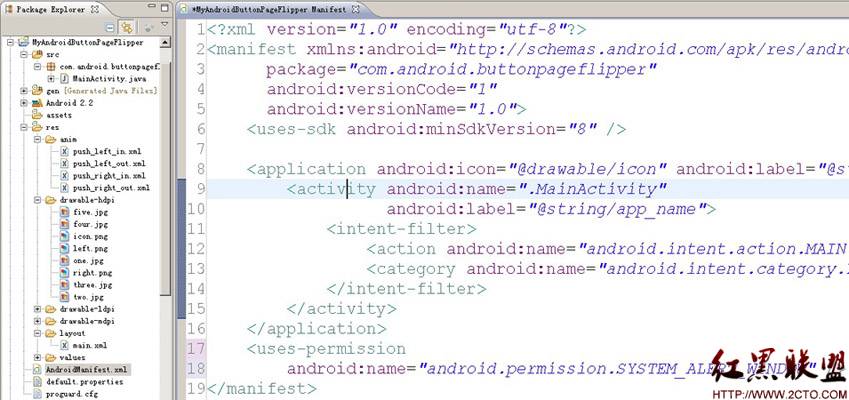android程序接通和挂断电话
package com.ebupt.phonerecorddemo.server;
import java.lang.reflect.Method;
import android.content.Context;
import android.content.Intent;
import android.telephony.TelephonyManager;
import android.util.Log;
import android.view.KeyEvent;
import com.android.internal.telephony.ITelephony;
public class PhoneUtils {
static String TAG = "PhoneUtils";
/**
* 从TelephonyManager中实例化ITelephony,并返回
*/
static public ITelephony getITelephony(TelephonyManager telMgr)
throws Exception {
Method getITelephonyMethod = telMgr.getClass().getDeclaredMethod(
"getITelephony");
getITelephonyMethod.setAccessible(true);// 私有化函数也能使用
return (ITelephony) getITelephonyMethod.invoke(telMgr);
}
//自动接听
public static void autoAnswerPhone(Context c,TelephonyManager tm) {
try {
Log.i(TAG, "autoAnswerPhone");
ITelephony itelephony = getITelephony(tm);
// itelephony.silenceRinger();
itelephony.answerRingingCall();
} catch (Exception e) {
e.printStackTrace();
try {
Log.e(TAG, "用于Android2.3及2.3以上的版本上");
Intent intent = new Intent("android.intent.action.MEDIA_BUTTON");
KeyEvent keyEvent = new KeyEvent(KeyEvent.ACTION_DOWN,
KeyEvent.KEYCODE_HEADSETHOOK);
intent.putExtra("android.intent.extra.KEY_EVENT", keyEvent);
c.sendOrderedBroadcast(intent,
"android.permission.CALL_PRIVILEGED");
intent = new Intent("android.intent.action.MEDIA_BUTTON");
keyEvent = new KeyEvent(KeyEvent.ACTION_UP,
KeyEvent.KEYCODE_HEADSETHOOK);
intent.putExtra("android.intent.extra.KEY_EVENT", keyEvent);
c.sendOrderedBroadcast(intent,
"android.permission.CALL_PRIVILEGED");
Intent localIntent1 = new Intent(Intent.ACTION_HEADSET_PLUG);
localIntent1.addFlags(Intent.FLAG_ACTIVITY_NO_HISTORY);
localIntent1.putExtra("state", 1);
localIntent1.putExtra("microphone", 1);
localIntent1.putExtra("name", "Headset");
c.sendOrderedBroadcast(localIntent1,
"android.permission.CALL_PRIVILEGED");
Intent localIntent2 = new Intent(Intent.ACTION_MEDIA_BUTTON);
KeyEvent localKeyEvent1 = new KeyEvent(KeyEvent.ACTION_DOWN,
KeyEvent.KEYCODE_HEADSETHOOK);
localIntent2.putExtra("android.intent.extra.KEY_EVENT",
localKeyEvent1);
c.sendOrderedBroadcast(localIntent2,
"android.permission.CALL_PRIVILEGED");
Intent localIntent3 = new Intent(Intent.ACTION_MEDIA_BUTTON);
KeyEvent localKeyEvent2 = new KeyEvent(KeyEvent.ACTION_UP,
KeyEvent.KEYCODE_HEADSETHOOK);
localIntent3.putExtra("android.intent.extra.KEY_EVENT",
localKeyEvent2);
c.sendOrderedBroadcast(localIntent3,
"android.permission.CALL_PRIVILEGED");
Intent localIntent4 = new Intent(Intent.ACTION_HEADSET_PLUG);
localIntent4.addFlags(Intent.FLAG_ACTIVITY_NO_HISTORY);
localIntent4.putExtra("state", 0);
localIntent4.putExtra("microphone", 1);
localIntent4.putExtra("name", "Headset");
c.sendOrderedBroadcast(localIntent4,
"android.permission.CALL_PRIVILEGED");
} catch (Exception e2) {
e2.printStackTrace();
Intent meidaButtonIntent = new Intent(
Intent.ACTION_MEDIA_BUTTON);
KeyEvent keyEvent = new KeyEvent(KeyEvent.ACTION_UP,
KeyEvent.KEYCODE_HEADSETHOOK);
meidaButtonIntent.putExtra(Intent.EXTRA_KEY_EVENT, keyEvent);
c.sendOrderedBroadcast(meidaButtonIntent, null);
}
}
}
//自动挂断
public static void endPhone(Context c,TelephonyManager tm) {
try {
Log.i(TAG, "endPhone");
ITelephony iTelephony;
Method getITelephonyMethod = TelephonyManager.class
.getDeclaredMethod("getITelephony", (Class[]) null);
getITelephonyMethod.setAccessible(true);
iTelephony = (ITelephony) getITelephonyMethod.invoke(tm,
(Object[]) null);
// 挂断电话
iTelephony.endCall();
} catch (Exception e) {
e.printStackTrace();
}
}
}
package com.android.internal.telephony;
/**
* Inte易做图ce used to interact with the phone. Mostly this is used by the
* TelephonyManager class. A few places are still using this directly.
* Please clean them up if possible and use TelephonyManager instead.
* {@hide}
*/
inte易做图ce ITelephony {
/**
* End call or go to the Home screen
* @return whether it hung up
*/
boolean endCall();
/**
* Answer the currently-ringing call.
*
* If there's already a current active call, that call will be
* automatically put on hold. If both lines are currently in use, the
* current active call will be ended.
*
* TODO: provide a flag to let the caller specify what policy to use
* if both lines are in use. (The current behavior is hardwired to
* "answer incoming, end ongoing", which is how the CALL button
* is specced to behave.)
*
* TODO: this should be a oneway call (especially since it's called
* directly from the key queue thread).
*/
void answerRingingCall();
/**
* Silence the ringer if an incoming call is currently ringing.
* (If vibrating, stop the vibrator also.)
*
* It's safe to call this if the ringer has already been silenced, or
* even if there's no incoming call. (If so, this method will do nothing.)
*
* TODO: this should be a oneway call too (see above).
* (Actually *all* the methods here that return void can
* probably be oneway.)
*/
void silenceRinger();
/**
* Allow mobile data connections.
*/
boolean enableDataConnectivity();
/**
* Disallow mobile data connections.
*/
boolean disableDataConnectivity();
/**
* Report whether data connectivity is possible.
*/
boolean isDataConnectivityPossible();
}
package com.ebupt.phonerecorddemo.server;
import android.app.Service;
import android.content.BroadcastReceiver;
import android.content.Context;
import android.content.Intent;
import android.telephony.TelephonyManager;
import android.util.Log;
public class PhoneReceiver extends BroadcastReceiver {
String TAG = "PhoneReceiver";
@Override
public void onReceive(Context context, Intent intent) {
TelephonyManager tm = (TelephonyManager) context
.getSystemService(Service.TELEPHONY_SERVICE);
switch (tm.getCallState()) {
case TelephonyManager.CALL_STATE_OFFHOOK:// 电话打进来接通状态;电话打出时首先监听到的状态。
Log.i("onCallStateChanged", "CALL_STATE_OFFHOOK");
break;
case TelephonyManager.CALL_STATE_RINGING:// 电话打进来状态
Log.i("onCallStateChanged", "CALL_STATE_RINGING");
PhoneUtils.autoAnswerPhone(context,tm);
break;
case TelephonyManager.CALL_STATE_IDLE:// 不管是电话打出去还是电话打进来都会监听到的状态。
Log.i("onCallStateChanged", "CALL_STATE_IDLE");
break;
}
}
}
补充:移动开发 , Android ,





